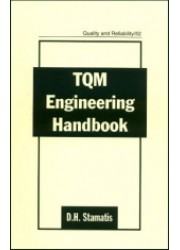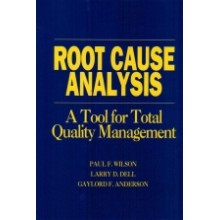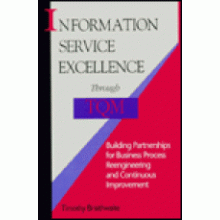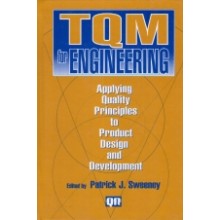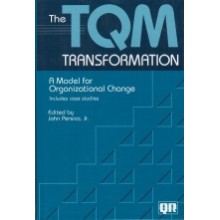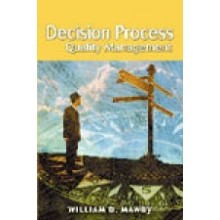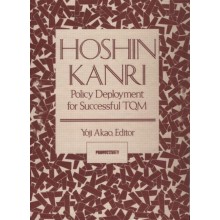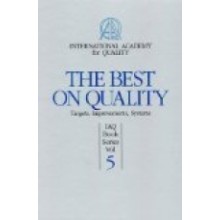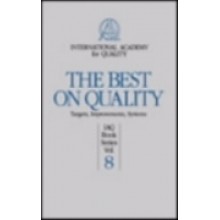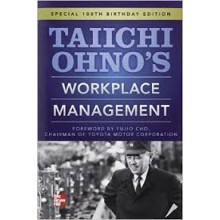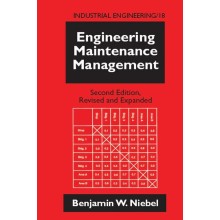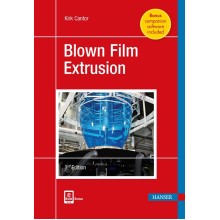TQM Engineering Handbook
Our Price: £168.00
Discount : 20%
Quantity:
-
Add to Compare
Description:
This prectical resource establishes a sound rationale for the continuation of Total Quality Management(TQM) in all organization, offering a model and an implementation strategy, as well as traditional and nontraditional methodsfor the successful enhancement and maintenance of quality.
Providng awarenness of issues necessary for survival in the highly competitive world of quality. TQM Engineering Handbook defines traditional and modern quality concepts form sampling, process, process and capability to empowerment, design for assembly, and total employee involvement.... approaches regression analysisfrom the unique perspective of the user ....compares classical and Taguchi designs and the shainin approach....details failure mode and effect analysis, quality function development, benchmaring, geometric tolerancing, theory of constraints, and cross tab analysis....discusses quality sward and the effective application of international standards....many more.
Providing self-contained chapters as well as references, tables, equations, and drawings.TQM Engineering Handbook is an excellent guide for quality managers and engineers; statisticians; executive, supervisors, facilitators.
Providing self-contained chepter as well as references, tables, equations and drawings, TQM Engineering Handbook
Offering a model, an implementing strategy, as well as traditional and nontraditional methods for the successful enhancement and maintenance of quality, this work establishes a rationale for the continuation of Total Quality Management (TQM) in all organizations. It considers leading quality-related topics, such as unusual charts, supplier-organization-customer relationships, customer needs and expectations, instructional design, adult learning, advanced quality planning, and reliability.
For More Details, Please check the Contents:
About The Series
Preface
Acknowledgments
Introduction
Chapter 1 : The Quality Revolution
Quality Overview
The Paradigm Change
The Gurus of Quality
References
Chapter 2 : Traditional Quality Concepts
Data
Sampling
Variation
Measurement
Process
Warning! No One Is Perfect
References
Chapter 3 : Modern Concepts of Quality
Leadership
Team Leadership Functions and Antifunctions
Participation Philosophies
Ways of Making a Decision
Change Formula Philosophy
Strategic Planning
Empowerment
Motivation
Reward System
Reengineering
Agile Manufacturing
Partnering
Total Predictive Maintenance (TPM)
Outsourcing
Just in Time
Implementing the JIT Process
Kanban Inventory Management System
Quality Considerations
Design for Assembly
Kaizen
Poka-Yoke
Concurrent Engineering
Zero Defects
Total Employee Involvement
References
Chapter 4 : Implementation Strategy for Total Quality Management
Overview
It Couldn’t Be Done
The Role of TQM
Traditional Model of TQM
Contemporary Model of TQM
A Generic Model of Modern TQM
Leadership
A Warning on the Issue of Continuous Improvement
Application of the Model
Implementation Strategy
The Role of the Consultant
References
Chapter 5 : Tools of Quality
Application of Quality Improvement Tools
Summary of the Basic Tools
Summary of the Management Tools of Quality
References
Chapter 6 : Special Tools and Techniques for The Future World of Quality
Needs Assessment
Ideation
Force Field Analysis
The Five Whys
Affinity Chart
Storyboard
Nominal Group
Survey Studies
Audit
References
Chapter 7 : Unusual Yet Powerful Tools Used in TQM
Moving Average and Moving Range Charts
Exponentially Weighted Moving Average Chart
Web or Radar Chart
Evolutionary Operation
Standardized Charts for Attribute Control
Cumulative Sum Chart
Multi-Vari Chart
References
Chapter 8 : Regression Analysis : The Foundation of Multivariate Analysis
Regression Analysis
Discriminant Analysis
Logistic Regression
Factor Analysis
Cluster Analysis
General Linear Model
Step Regression
Correlation Analysis
Conjoint Analysis
Concerns with Statistical Techniques
References
Chapter 9 : Design of Experiments
DOE Versus One at a Time
Classical Design
After the ANOVA
Taguchi Design
Taguchi’s Definition of Quality Characteristics
A Comparison of Classical and Taguchi Designs
Typical Taguchi Approach to Experimentation
Shainin Approach
A Comparison of the Three Approaches to Design of Experiments
Typical Stages in Industrial Experimentation
References
Chapter 10 : More Tools for Modern Quality
Failure Mode and Effect Analysis
Quality Function Deployment
Benchmarking
Cost of Quality
Starting a Quality Cost Reporting System
Geometric Dimensioning and Tolerance
Theory of Constraints
Crosstabulation Analysis (Disaggregate Analysis )
References
Chapter 11 : The Full Chain of Quality : Supplier - Organization – Customer
Overview
Supplier
Supplier Certification
Organization
Customer
Customer Satisfaction
References
Chapter 12 : Value Analysis
Introduction to Value Control
History of Value Control
The Value Concept
Planned Approach
Evaluation, Planning, Reporting, and Implementation
Value Control: The Job Plan
Value Control Techniques
References
Chapter 13 : Problem Solving
Overview
Foundations of Problem Solving
Critical Versus Creative
Systematic Creativity
The Urgent Versus the Important
Steps in Problem Solving
References
Chapter 14 : Teams
Overview
Team Roles and Functions
The Consensus Decision Process
Guidelines to Assist Arriving at a Consensus
Team Process Functions
References
Chapter 15 : Meetings
Definition
Requirements
Action Checklist
Doing It--Facilitating the Meeting
Listening Skills
Tips to Improve Your Listening Skills
Idea List for Meeting
References
Chapter 16 : Project Management
What Is a Project?
The Process of Project Management
Key Integrative Processes
Project Management and Quality
A Generic Seven-Step Approach to Project Management
A Generic Application of Project Management in Implementing TQM
The Value of Project Management in the Implementation Process
Why Project Management Succeeds
References
Chapter 17 : Training and The Learning Organization
Training and the Learning Organization
The Adult Learner
Systems Approach
Basic System Characteristics
Knowledge of a System in Training
Instructional Design
Mastery Learning
Computer-Based Training (CBT)
Virtual Reality
Evaluation of Training
The Trainer
Matching Training Media with Project Goals
References
Chapter 18 : Planning for Quality
Advanced Quality Planning
Quality Operating System
References
Chapter 19 : Overview of Reliability
Basic Aspects of Mechanical Design Reliability
Reasonable Design Reliability Predictions
General Reliability Factors
Failure Rate
Reliability Component Relationship
Markov Modeling as a Reliability Tool
A Typical Reliability Program Plan for Any Organization
References
Chapter 20 : Quality Awards
The Malcolm Baldrige Quality Award
International Awards
References
Chapter 21 : International Standards of Quality and Corporate Quality Programs
International Standards
ISO 9000
ISO 14000
QS-9000
TE-9000
BSR/ASQC Z1.11
Corporate Quality Programs
References
&Write a review
Your Name:Your Review: Note: HTML is not translated!
Rating: Bad Good
Enter the code in the box below:
Copyright © 2014 Engineering Standards Bureau. All Rights Reserved.
Developed By Zoom Into Web


